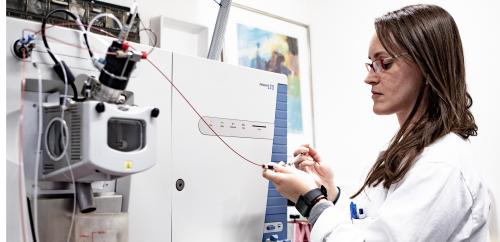Breakthrough in the search for a new treatment for multi-drug resistant tuberculosis

Amidst the corona pandemic it is easy to forget that tuberculosis continues to be the deadliest infectious disease in the world. Every year, approx. 10 million people worldwide are diagnosed with tuberculosis, and according to WHO’s latest numbers, the disease took the lives of 1.5 million people in 2018 alone.
Tuberculosis poses an increasing health risk as the bacteria Mycobacterium tuberculosis, which causes the disease, has developed resistance to the antibiotics-based drugs that have hitherto been used for treatment. The problem is growing, and globally, approx. 500,000 patients were diagnosed with multi-drug resistant tuberculosis in 2018.
Antimicrobial drugs as an alternative to antibiotics
An international group of researchers from Roskilde University, National University of Singapore, and Imperial College London have now published research results that show that a new type of chemically produced antimicrobial drugs are effective against multi-drug resistant tuberculosis. With these results the researchers have taken an important step forward in the struggle to find a new, effective treatment for multi-drug resistant tuberculosis.
New drugs developed and tested in the laboratories
The new research results are based on development and testing of chemically produced antimicrobial peptoids that may be active against precisely the bacteria that are resistant to antibiotics, incl. multi-drug resistant bacteria.
”We are always in a close race against disease causing organisms and their ability to break through our immunity, invade our bodies and cause deadly infections. To stay one step ahead, it is necessary to continuously do research in the development of new drugs,” says Biljana Mojsoska.
Within the research on Medical Biology and Chemistry at RUC, the researchers are working with, among other things, the complex chemical connections, peptoids, and adjusting their ability to create effective drugs that, in the future, will be able to kill very specific disease-causing organisms.
Researchers are looking forward to further examine the pharmaceutical potential of a specific peptoid called peptoid BM2.
At Roskilde University, Håvard Jenssen and Biljana Mojsoska will now continue to test promising peptoids that may be effective in the fight against multi-drug resistant bacteria in close collaboration with research colleagues Pui Lai Rachel Ee (National University of Singapore) and Sandra Newton (Imperial College London).
Our discovery gives researchers a whole new class of potential drugs against tuberculosis, and we look forward to examining the pharmaceutical potential further”, says Biljana Mojsoska.
Further information
For further information, please contact Assistant Professor Biljana Mojsoska, e-mail: biljana@ruc.dk, tel. +45 46 74 36 45